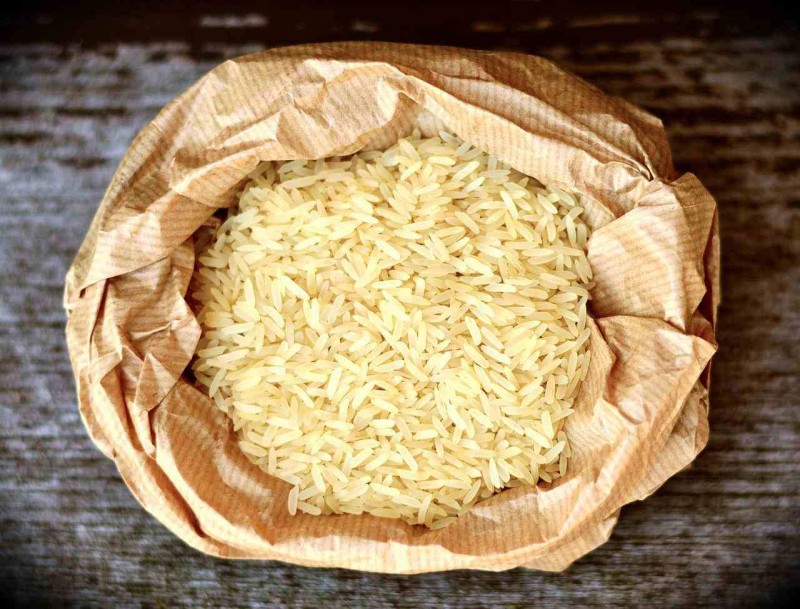Rice is a basic meal in many cultures, and practically everyone eats it on a daily basis. It is long grain rice that is mostly grown in Thailand, earning it the nickname Thai fragrant rice or Thai Hom Mali rice. To produce a nutritious supper, combine soft, fluffy white grains with any curry or sauce. What could possibly go wrong with a delicious cup of rice, right?
Would you like to know the difference between Thai long grain rice from a simple rice grain? Come on, let us know the details below as we have the taste of exploring it!
What is Thai Long Grain Rice
Thai Long Grain Rice bears a solid texture when cooked and puffs a large amount of cooked rice. Thai White Rice has a long history of popularity and has been a world staple for decades due to its distinctive cooking qualities. During the milling procedure, the germ, bran, and husk of Thai long-grain white rice are removed. It is grown in an irrigated field in Thailand's middle plain.
Thailand has a high level of production, with farmers cultivating multiple crops of rice each year. It has a long, transparent, and white look. After cooking, this Thai long grain rice is non-sticky and volumized. This rice may also be used to fry.
Is Thai Jasmine Rice Long grain?
Jasmine rice is long grain rice native to Thailand with a delicate floral and buttery aroma, named after the sweet-smelling jasmine flower. Jasmine rice, also known as "Tai Hom Mali Rice," is a unique species produced by a local Thai farmer and modified to be a premium white rice with a pandan-like scent that is widely recognized for its high-quality long-grain, curled-up ends, and clear, glossy surface.
When cooked, the rice retains its white color and long grain, but the texture turns delicate, with a fresh, enticing aroma that complements practically any savory recipe. You can produce fragrant, properly cooked jasmine rice every time if you use the appropriate water-to-rice ratio.
What is the difference between Thai jasmine rice and long-grain rice?
Jasmine rice is a variety of rice with a long grain. It is, therefore, longer and thinner than most other varieties of rice. It also has a fluffy texture rather than being mushy and clumpy when cooked. The two rice kinds are comparable in terms of nutritional value. According to Healthline, jasmine rice has more calories (181 to 160 per cup) than long-grain white rice, as well as an extra gram of fat, slightly more carbohydrates, and a trace of iron that white rice lacks. There are whole grain jasmine rice variants available, which will supply extra fiber.
Benefits of Long Grain Rice
Rice is a popular nutritional source in over 100 nations, where it is eaten with a range of delectable cuisines. Jasmine rice, also known as Thai fragrant rice, is a fragrant "long-grain" rice, with each grain measuring roughly four times its width. Jasmine rice also comes in a variety of colors, including red, purple, and blue, and is high in phytonutrients. These phytonutrients improve your immune system and your total health by protecting your body's cells.
Folic acid is also abundant in jasmine rice. It has been related to healthy pregnancies, particularly when consumed before and throughout the first trimester when there is major growth for the baby. Regular folic acid intake has been related to a decrease in the risk of birth abnormalities and neural tube defects.
If you're a rice eater, you could prefer rice above anything else, no matter what time of day it is. Rice is a reliable staple that is used in a variety of cuisines across the world. We are all familiar with Jasmine rice, a sort of long-grain rice that comes in various different variations.
These grains are available in a range of colors and have a high nutritional value. Manganese, phosphorus, Vitamin B1, B6, folic acid, fiber, selenium, magnesium, and other minerals are abundant in this rice type. Including jasmine rice in your normal diet can help you improve digestion, strengthen your immune system, prevent anemia, and have a healthy pregnancy.
What dishes can long-grain rice be used for?
This is the spot for you if you've ever stood in a grocery store aisle debating the distinctions between jasmine, basmati, and long-grain white rice and if those differences even matter when it comes to how you prepare and utilize them. Because long-grain rice is so popular and plentiful, there's a lot to learn about this light and fluffy grain. When cooked, long-grain rice is light and dry, making it perfect for pilafs, side dishes, and salads where the grains need to stay separate. Making fish cakes, bibimbap, rice pudding, and other foods with long grain rice are only a few examples.
Which is healthier: basmati or long-grain rice?
Basmati rice is prized for both its smell and flavor. Basmati rice is thinner than jasmine rice (which is recognized for being thin-grained). Basmati rice is also softer and has a less nutty flavor than jasmine rice. This makes basmati rice a more digestible alternative, especially for people who suffer from gastrointestinal disorders such as irritable bowel syndrome. Basmati rice is an excellent choice for athletes since it provides nutritious carbohydrates that can help you feel more energized. Basmati rice is high in niacin and thiamine. These two nutrients contribute to the prevention of depression and memory loss by supporting a healthy neural system.
Brown rice, on average, has a lower glycemic index than white rice. There are, however, additional elements that come into play. The glycemic index of long-grain rice is lower than that of short-grain rice. Basmati rice appears to have the lowest glycemic load of all the long-grain rice varieties. Brown basmati rice appears to be the greatest choice in terms of glycemic load, with short-grain white rice at the opposite end of the scale.
To sum it up…
Rice has traditionally provided sustenance to the Thai people and has developed a strong tie with their way of life. Rice has a special place in Thai culture because of its nutritious and life-giving properties.
In Thailand, there are around 3,500 types of rice, ranging from locally grown wild rice to recently developed cultivars. It feeds people throughout the country and plays an important part in Thailand's history, culture, society, and economy. Rice plays such an important part in the Thai diet that the verb "kin Khao" literally means "to eat rice." Rice occupies a unique place in the hierarchy of living beings and objects since it is a source of life.
If you want to discover more about the different tastes of Thai's many rice varieties, you might visit https://www.thailee.com/, and get your appetite ready to taste Thailand's best rice grains!
For Submit A Guest Post Technology Category blogging check the link.









